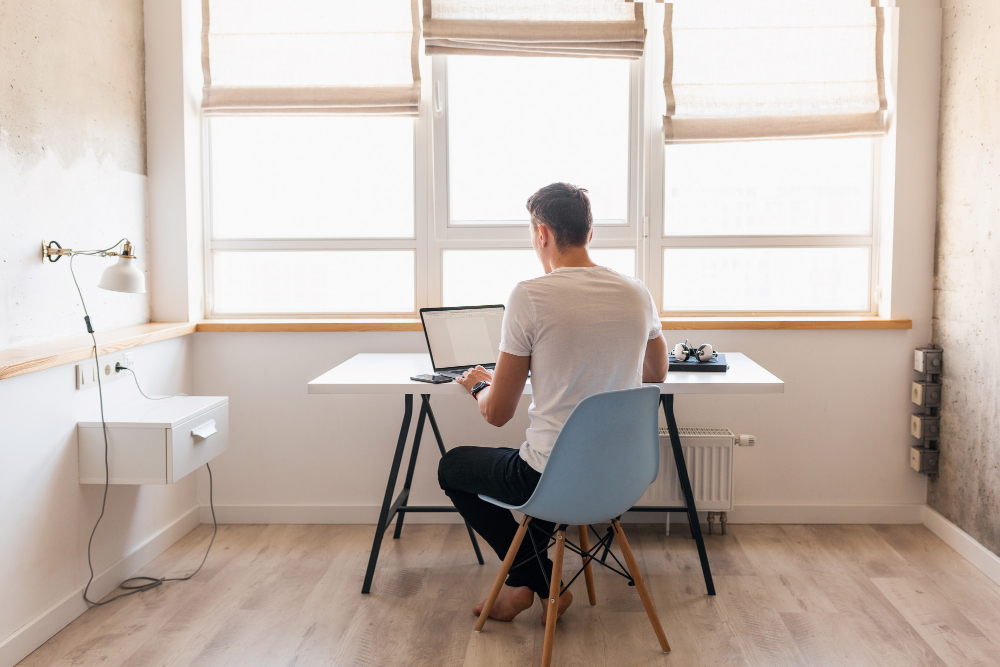Working from home offers flexibility and freedom, but it also comes with its own set of challenges—distractions, lack of structure, and difficulty separating work from personal life. The key to success? Designing a space that supports focus, efficiency, and creativity. Whether you’re a remote worker, entrepreneur, or freelancer, here’s how to create a home office that helps you find your flow.
1.) Choose a Dedicated Workspace
Your environment sets the tone for your productivity. If possible, designate a specific area for work—ideally, a separate room or a quiet corner away from household distractions. This helps signal to your brain that it’s time to focus when you enter this space.
2.) Prioritize Comfort and Ergonomics
An uncomfortable setup can lead to fatigue and frustration. Invest in:
A supportive chair to maintain good posture.
A desk at the right height to prevent strain.
Proper lighting to reduce eye strain—natural light is ideal, but a good desk lamp works too.
3.) Keep It Clutter-Free and Inspiring
A cluttered space can create mental chaos. Keep only what you need within reach and organize papers, cords, and supplies in designated spaces. Add personal touches like plants, motivational quotes, or artwork to keep you inspired.
4.) Set Up for Productivity
Use dual monitors if you multitask often.
Noise-canceling headphones can help block distractions.
A whiteboard or planner keeps tasks and goals visible.
Tech tools like time-tracking apps or a Pomodoro timer can enhance efficiency.
5.) Establish Boundaries
One of the biggest work-from-home challenges is avoiding distractions. Try:
Setting clear work hours and communicating them to your family.
Using a “Do Not Disturb” sign or headphones as a visual cue.
Taking scheduled breaks to avoid burnout.
6.) Optimize for Focus and Flow
Start with a ritual (coffee, deep breathing, or a quick stretch) to transition into work mode.
Try focus-enhancing techniques like the Pomodoro method (25 minutes of work, 5-minute break).
Incorporate movement—a standing desk or occasional stretching keeps energy levels up.
7.) Separate Work and Home Life
At the end of the workday, close your laptop, turn off notifications, and physically leave your workspace. Creating a clear boundary helps you recharge and maintain a healthy work-life balance.
Your Flow, Your Space
A productive home office isn’t about perfection—it’s about creating a space that works for you. With a little intention and structure, you can transform your home workspace into a place where focus, creativity, and success thrive.
What’s one change you can make today to improve your home office setup? Let’s talk in the comments!








